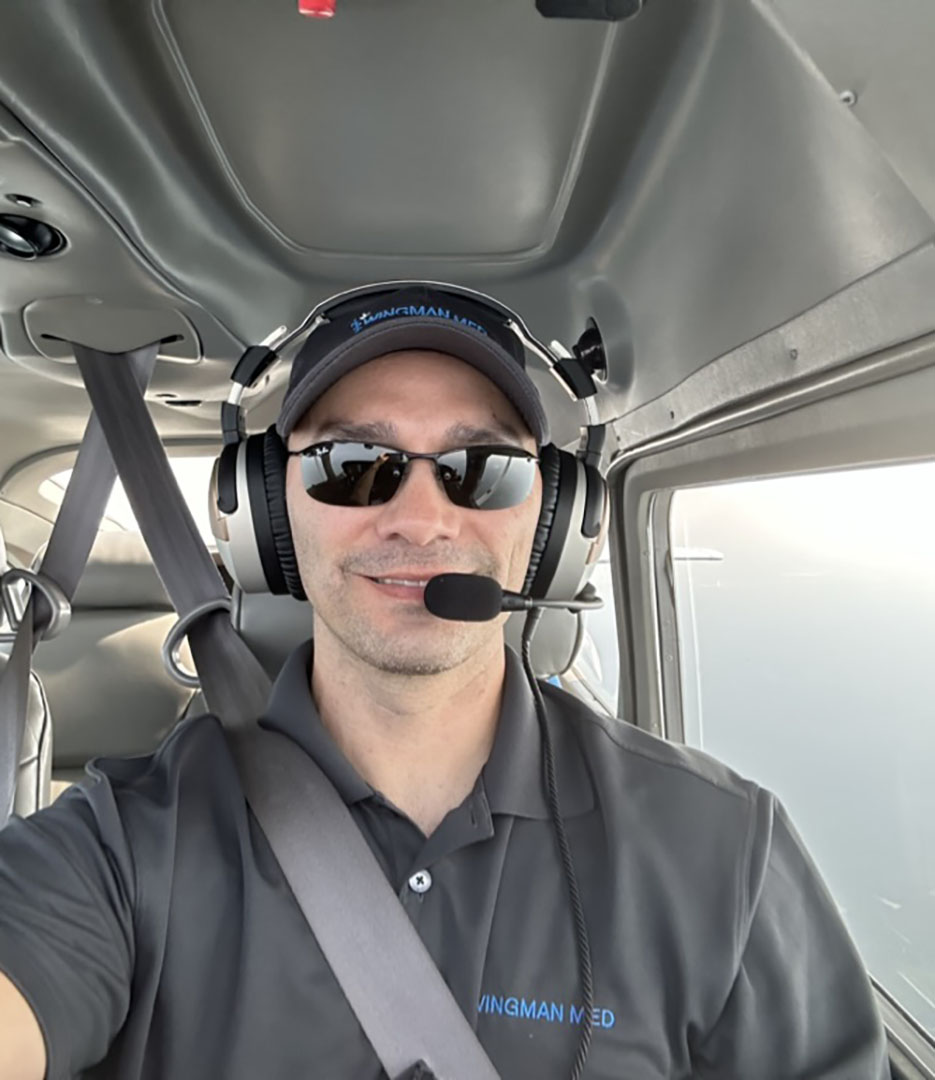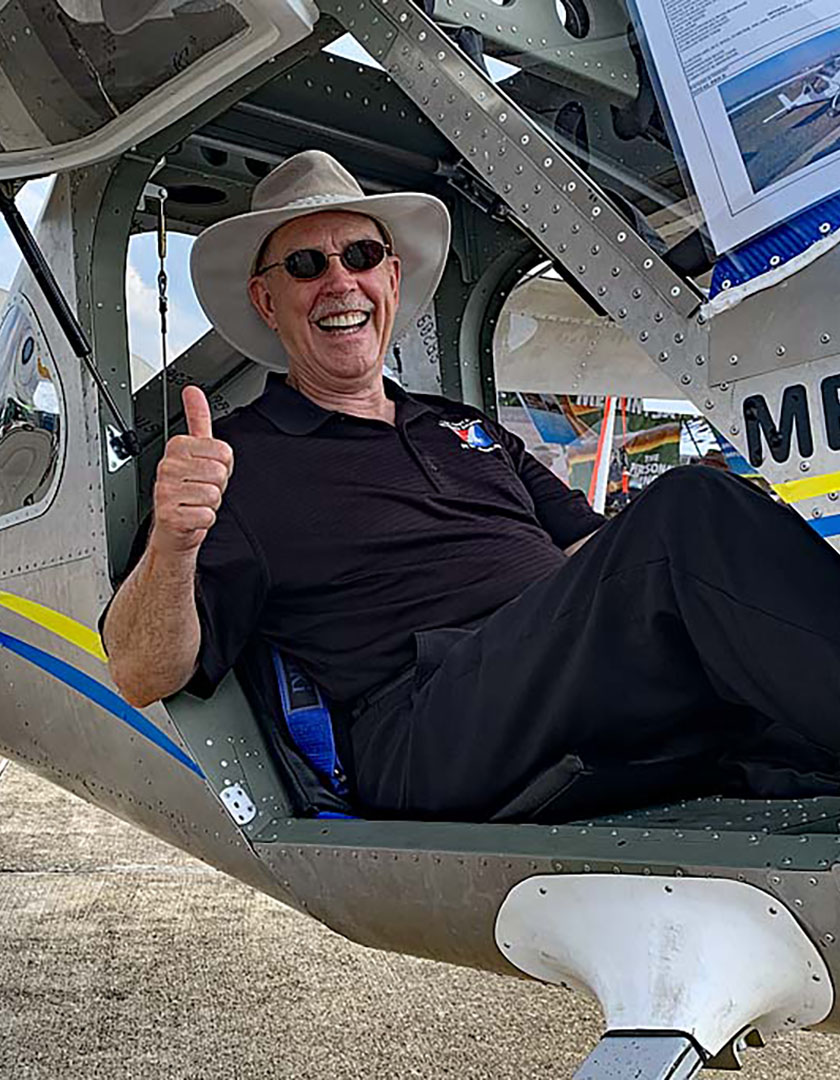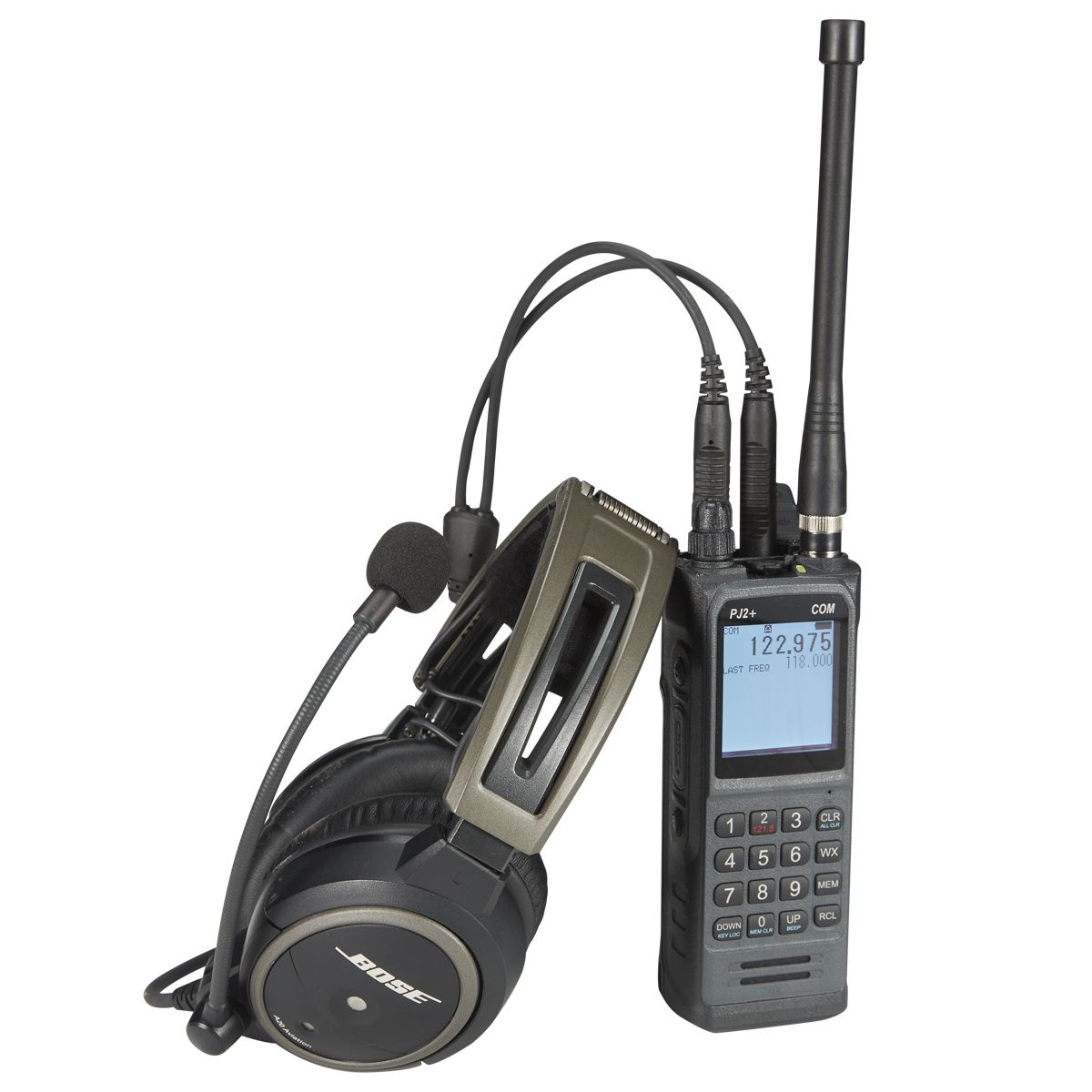I’ve been flying recreationally and professionally for over 20 years now and have been fortunate to be a part of what I call the technological renaissance of general aviation. When I started flying in 2000, GPS was gaining traction as a certified navigation source, digital flight instruments were becoming a viable alternative to round dials in GA airplanes, and desktop computers were streamlining the flight planning process.
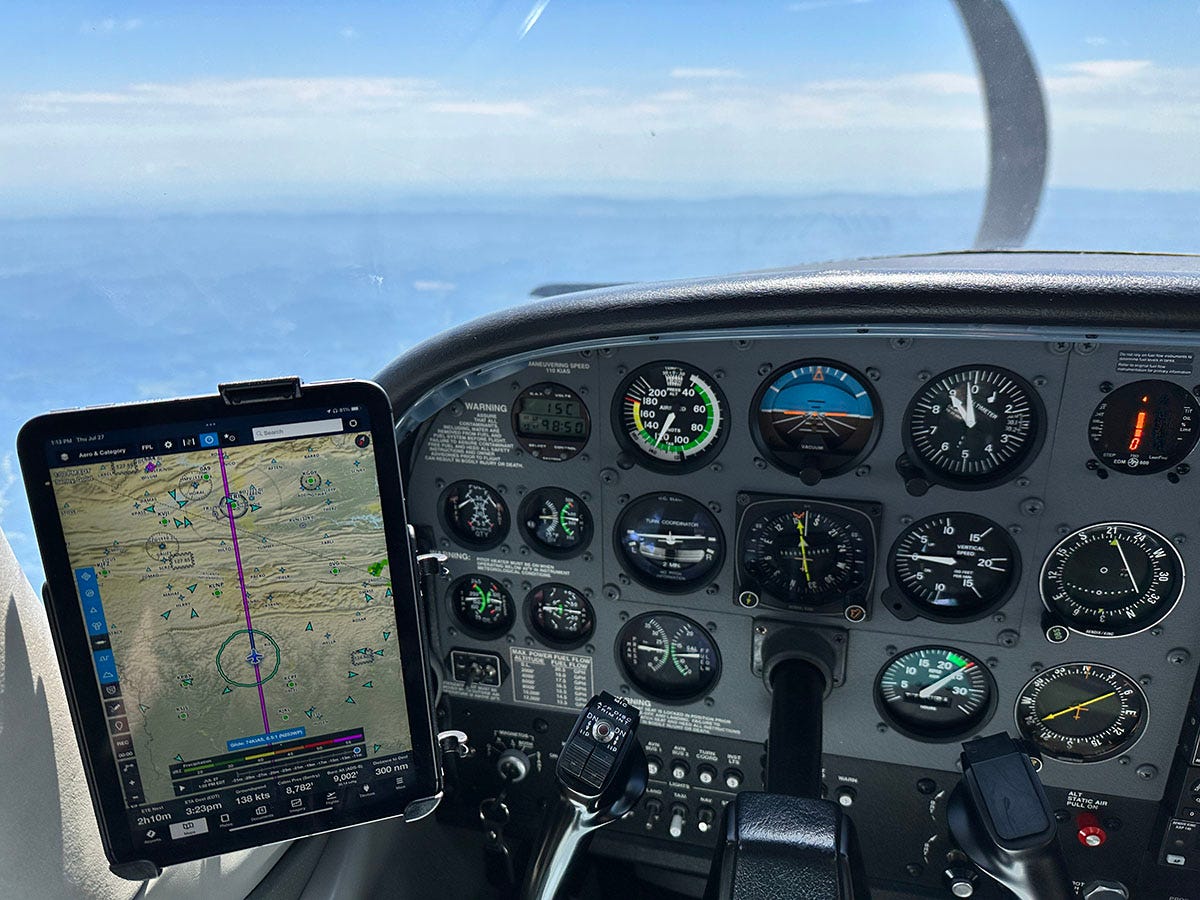 Fast-forward to today and we’re all benefitting from digital charts on iPads, free datalink weather, and a modern(ish) Air Traffic Control system. One thing hasn’t changed though—we’re still flying at high altitudes in non-pressurized GA airplanes where the air pressure is lower and hypoxia (lack of oxygen) is a serious threat.
Fast-forward to today and we’re all benefitting from digital charts on iPads, free datalink weather, and a modern(ish) Air Traffic Control system. One thing hasn’t changed though—we’re still flying at high altitudes in non-pressurized GA airplanes where the air pressure is lower and hypoxia (lack of oxygen) is a serious threat.
I’ve logged around 3,000 hours of single and multiengine flying over that period: 1,200 hours in a pressurized jet and 1,800 in piston-engine airplanes. Most of my piston-engine cross-country flights were at 9,000 or 10,000 ft. (often with climbs to 13,000 ft. for a few minutes to top some weather) and all without oxygen.
I’ve gone through the familiar high-altitude and hypoxia training many times during recurrent training events and could recite the facts as well as anyone to impress an examiner or check airman. But, yawn, why should I really care about this on my personal cross-country flights at or below 12,000 ft.?
I also regularly ski in Colorado and Montana at elevations above 11,000 ft., where I’m pushing my heart rate and leg muscles to the limit, all without oxygen, and I feel great at the end of the day. If I can manage to do that without ill effects, again, why would I bother with oxygen in a less strenuous environment at similar altitudes?
My views changed on this drastically after talking with another pilot at my home airport who flies a non-turbo Cirrus SR22 at altitudes between 8,000 and 12,000 ft. and routinely uses supplemental oxygen. His general take was that it drastically improved his comfort level, both during and after the flight, and his SOP is to use it on any flight over two hours above 8,000 ft.
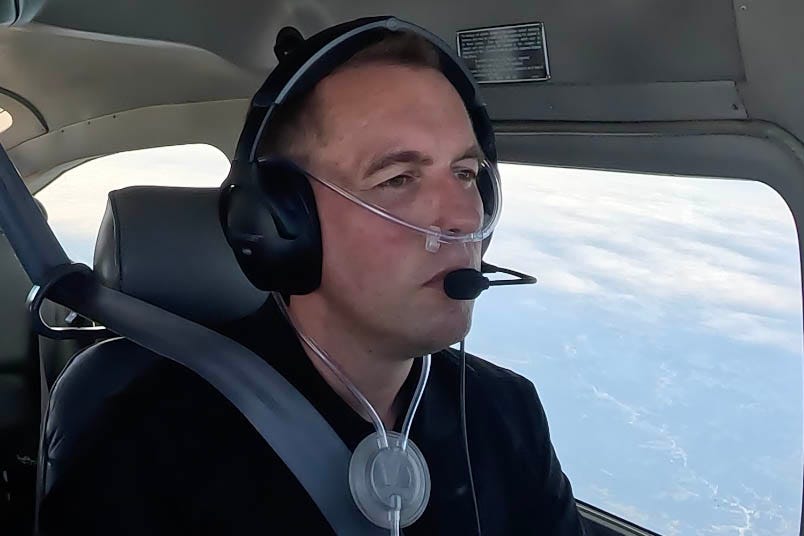 It just so happened that I had a long cross-country coming up in a Cessna 182 with my family from Cincinnati, OH, to Charleson, SC, and he offered to lend me his portable Aerox bottle, cannula, and pulse oximeter (to measure blood oxygen saturation) for the flight.
It just so happened that I had a long cross-country coming up in a Cessna 182 with my family from Cincinnati, OH, to Charleson, SC, and he offered to lend me his portable Aerox bottle, cannula, and pulse oximeter (to measure blood oxygen saturation) for the flight.
I’ll be honest: it was a little intimidating at first and felt like one more thing to manage in the cockpit. I had my hands full already setting up a baby seat in the back for my 20-month old son and all the things needed to keep him occupied for three hours.
My wife sat in the back with my son, so I was able to keep the O2 bottle up front with me in the right seat along with my other flight gear. I filed for 10,000 ft. and ATC gave me a direct climb right up to that altitude. After settling in at cruise for the planned three hour flight, I felt great and debated whether or not to mess with the oxygen. I decided to let the facts make the decision and I pulled out the pulse oximeter to check my current oxygen level.
On the ground at 800 ft. MSL before takeoff, it read 95%; now at 9,000 ft. it read much lower at 82%. A “normal” saturation will vary from person to person, but the general consensus is you’ll perform and feel best when it’s above 90 to 92%.
After completing the cruise checklist and verifying that the passengers were comfortably resting in the back, I connected the cannula to the bottle, put it on around my headset and opened the valve on the Aerox bottle.
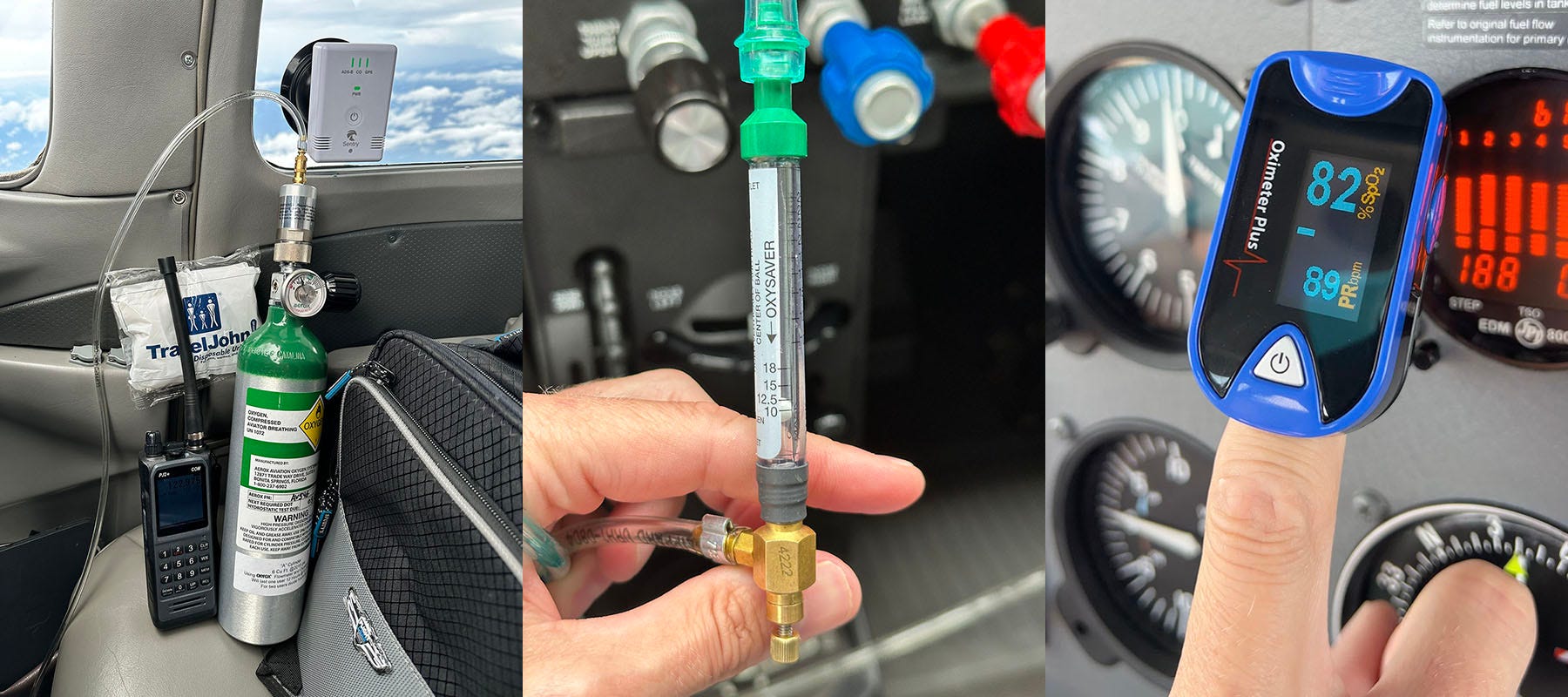
Once the main valve is fully open, you then fine tune the oxygen flow with a smaller valve, based on the current altitude. You hold the flowmeter vertically and adjust the second valve to position the floating ball next to the line representing your altitude (the higher the ball goes in the tube, the higher rate of oxygen flow).
Cannulas have come a long way since the early days and the latest version includes a small pendant reservoir to efficiently deliver oxygen as you breathe in, instead of a continuous flow. They’re comfortable too, as I quickly forgot I was wearing it after a minute or two. They’re approved for use up to 18,000 ft., so this is the way to go for most pilots.
Anecdotally, I already felt much better and clear-headed after using the oxygen for a few minutes, and the pulse oximeter verified what I was feeling—my O2 saturation jumped back to 95%. I continued to adjust the oxygen flowmeter valve throughout to flight ensure the bottle would last for the entire round trip, and eventually found a point where my O2 saturation settled in at 90%. I also kept an eye on the PSI gauge on the bottle to get a rough feel for the rate of use, which essentially acts like a fuel gauge for air.
After dodging some rain showers near the ILS final approach fix on the way into Charleston, we made an uneventful landing and parked at the FBO. The first thing I noticed was, wow did I feel great! After three hours at 9,000 ft., I instantly recognized how lethargic I would usually be after landing, but after using oxygen for the flight I felt fresh and ready to go.
I only used about 40% of the 6 cubic foot bottle and would have plenty for the flight home in a few days. The oxygen proved even more useful for the return trip, where I had to make an unplanned climb to 12,000 ft. to top some building cumulus clouds in between several thunderstorm cells. Thanks to ForeFlight, a Sentry ADS-B receiver and an iPad, I was able to navigate several convective systems on the way home and not experience anything worse than light chop.
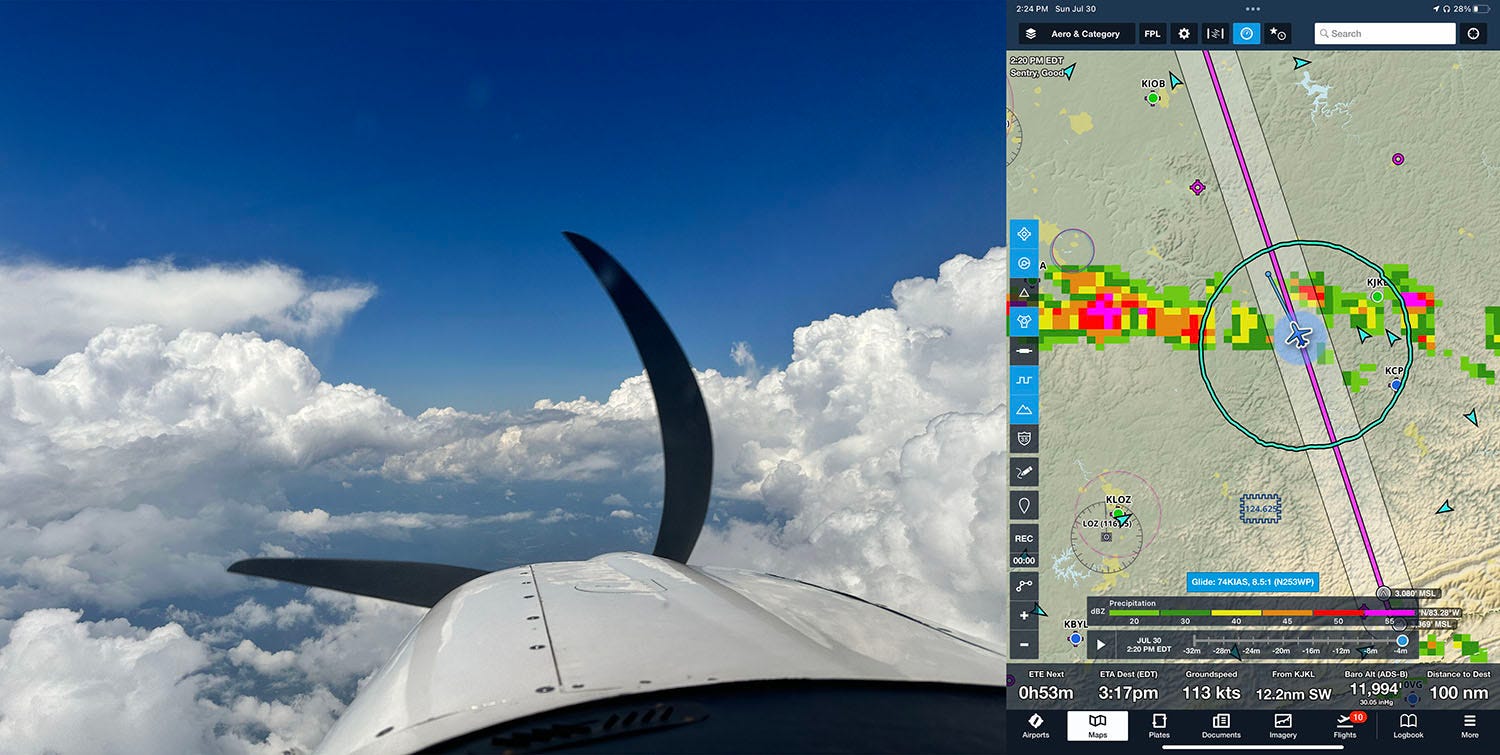
I think it’s safe to say the oxygen kept my head clear for the entire flight and improved my mental game while steering clear of convective weather, and again I felt great after landing without the tired side effects of being at high altitudes for an extended period.
Some will make the pitch that you’re flat out unsafe flying at or above 10,000 ft., but that’s more of a scare tactic and the reality is it depends for each person's health and physical condition. For me, I felt perfectly “safe” flying without oxygen at these altitudes for the past two decades, but the real eye-opener on this trip was that flying with oxygen made the flights much more comfortable and enjoyable while en route and after landing.
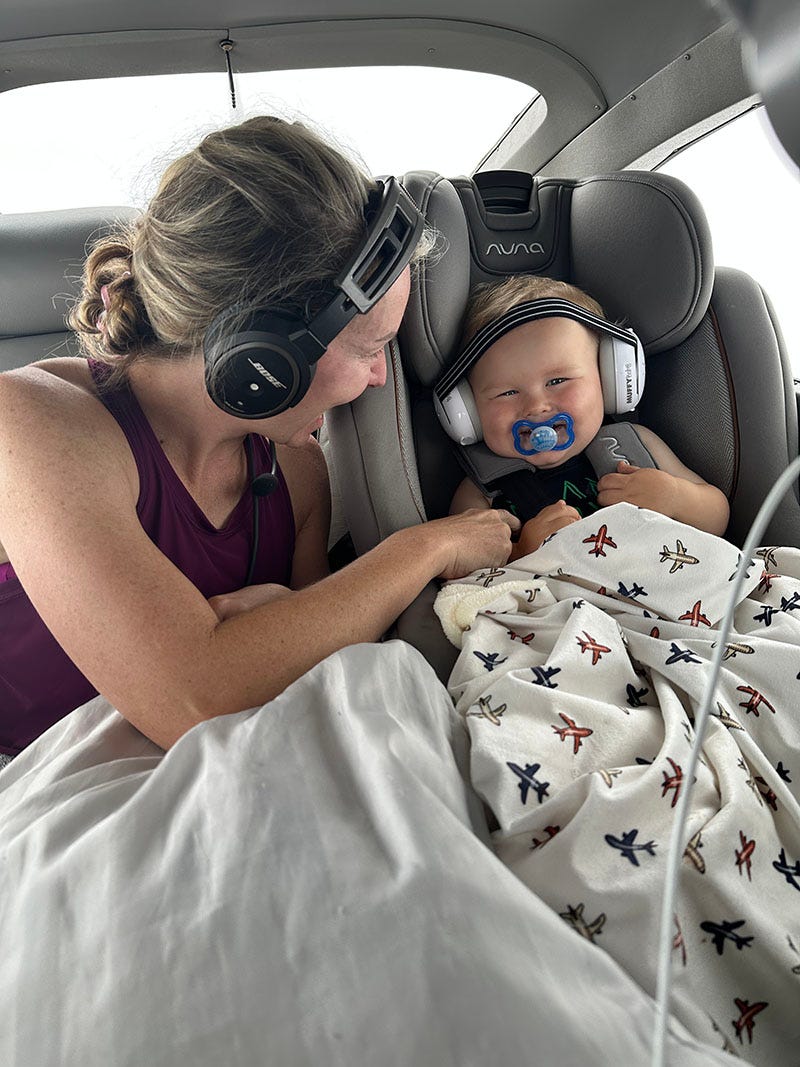 For this flight, my passengers were content with sleeping most of the way and didn’t have any interest in using oxygen. This made the single-place Aerox bottle the perfect compromise of size and utility.
For this flight, my passengers were content with sleeping most of the way and didn’t have any interest in using oxygen. This made the single-place Aerox bottle the perfect compromise of size and utility.
If you’d like to provide oxygen to your passengers too, consider this 4-place SkyOx oxygen system. You can select a larger bottle size too, from 15 to 24 cubic feet, providing all occupants on board supplemental oxygen that will last for even the longest of flights. This system also utilizes SkyOx’s Click-a-Breath regulator, which makes it easy to set the correct pressure for all occupants based on your altitude.
Want to learn more about hypoxia and its effects? Check out our latest video below, where we took a flight instructor up as a passenger in the same C182 to 15,000’ MSL to show how he reacted before and after oxygen at this altitude.


